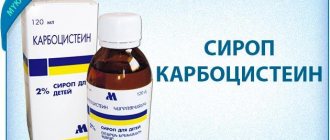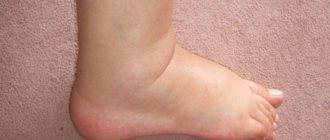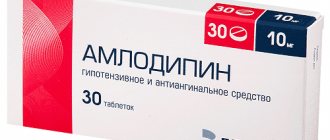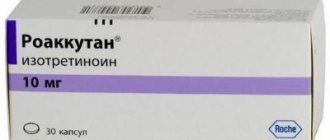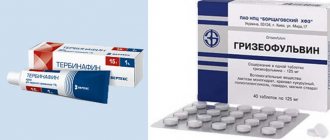The drug Tinidazole 500 is widely used in medical practice. It is effective in the treatment of infectious and inflammatory diseases caused by several types of bacteria.
Tinidazole destroys the genetic structure (DNA) of protozoan microorganisms.
general characteristics
Tinidazole belongs to the group of antiprotozoal medications with antibacterial properties. The action of the drug is aimed at suppressing the synthesis and damage to the DNA of microorganisms that cause the disease.
The medicine is active against Trichomonas vaginalis, Lamblia intestinalis, Entamoeba histolytica and a number of anaerobic bacteria, including Bacteroides spp. and Peptostreptococcus spp.
Tinidazole is effective in the treatment of infectious and inflammatory diseases.
Use during pregnancy, breastfeeding, old age
It is a proven fact that the active substance and its metabolites are able to cross the placental barrier, so the potential negative impact on the health of the unborn baby is not denied.
Specific clinical studies that would confirm or refute the negative effect of Tinidazole on the course of pregnancy, the woman’s well-being or the development of pathologies in the fetus have not yet been conducted. To date, there are no reports regarding the negative effect of the drug on pregnancy from women who accidentally or intentionally used Tinidazole while carrying a baby.
Taking the drug by pregnant women
Even if a pregnant woman is diagnosed with Toxocara, Giardia or other helminths or microorganisms, doctors do not recommend starting treatment in the first trimester. In the absence of side effects and great danger to the woman’s health, the drug can be prescribed in the II-III trimesters.
As for mothers with lactation, they must interrupt breastfeeding when starting to use Tinidazole. It has been clinically proven that the active substance can be excreted in breast milk for another 72 hours from the moment of administration. Thus, all the side effects that can occur in an adult are likely to occur in a child with severe consequences.
The use of Tinidazole by elderly people is not prohibited. At the same time, given the special sensitivity of the stomach and organs of the urinary system in them, antihistamines, diuretics, and drugs to protect the mucous membrane of the stomach and duodenum (for example, Almagel, Smecta) can be prescribed in parallel with Tinidaloz.
As it becomes clear from the observations of doctors and reviews of patients, Tinidazole is highly effective. However, unauthorized use of the product is strictly prohibited. Symptoms and treatment should only be identified by a specialist after a qualified diagnostic examination.
How to use Tinidazole 500
The tablets are taken orally during or immediately after meals.
The dosage regimen and duration of treatment depend on the clinical situation and are determined by the doctor.
For trichomoniasis in adults and children
The daily dose is taken once. An adult patient is recommended to take 4 tablets, which is equal to 2 g of tinidazole. Children's dose - 50-75 mg per 1 kg of child's body weight.
Depending on the severity of the disease and other factors, the doctor may prescribe more of the drug.
For amoebiasis
Patients suffering from intestinal amebiasis are recommended to take 4 tablets per day for 2-3 days. The course of treatment for children is 3 days. The pediatric dose depends on the child’s body weight - 50-60 mg of the drug per 1 kg of the patient’s weight.
Therapy for amoebic liver abscess involves a different treatment regimen:
- the first 3 days take 1.5-2 g;
- the next 3 days – 4.5-12 g.
The daily dose of a child depends on his body weight and is 50-60 mg per 1 kg. The course lasts 5 days.
For vaginitis
When treating vaginitis, 2 treatment regimens are used:
- single dose of 2 g of tinidazole;
- for 5 days, take 1 g of medication per day.
Tinidazole 500 is prescribed for vaginitis.
For gingivitis
For gum inflammation, the treatment course lasts 5 days. The recommended dose is 0.5 g 2 times a day.
For nail fungus
If the drug is well tolerated, treatment lasts 1 month. The patient should take 2 g once a day.
The doctor may prescribe a larger dose if the patient’s age and health condition allow it.
Possible adverse reaction and overdose
By destroying some microorganisms, Tinidazole can also lead to undesirable reactions in humans:
- Digestion. Diarrhea, nausea, loss of appetite, stomatitis, glossitis, abdominal pain, coated tongue, unpleasant odor from the mouth, and vomiting are relatively common during treatment with the drug. With prolonged use, the medication can cause anorexia.
- Allergic manifestations. Hypersensitivity, itching, peeling of the skin, urticaria are the most common adverse reactions associated with the skin. Pharmacists do not deny that Tinidazole can cause the development of angioedema. Its main signs are: swelling of the face, tongue, and sometimes the trachea, which leads to difficulty breathing.
- Nervous system. Treatment of toxocariasis in adults with Tinidazole can cause a decrease in tactile sensations, provoke headaches, dizziness, loss of coordination, sudden redness of the face, and a metallic taste in the mouth. In isolated cases, the drug can cause generalized seizures.
- Urinary system. Mycosis of the urinary tract is relatively rare. When a person uses this drug, the urine itself may become darker. This is not something to be afraid of. This symptom will go away on its own after you stop using the product.
- Hematopoiesis. The composition of the drug helps reduce leukocytes.
- General manifestations. Adverse reactions of this type include fever, feeling tired, and drowsiness.
Science still does not know about cases of overdose, but pharmacists indicate that this can happen. The most likely symptoms in this case will be:
- tachycardia;
- Strong headache;
- loss of consciousness;
- bronchospasm;
- anaphylactic shock;
- arterial hypotension.
The remedy does not have a specific antidote, and therefore treatment should be symptomatic. After gastric lavage, antihistamines, sorbents, painkillers, and antipyretics can be used. In particularly difficult cases, the patient ends up in intensive care. Dialysis helps cleanse the blood of the active substance and its metabolites.
Contraindications
Tinidazole has several contraindications for use. Among them:
- intolerance to the active or additional substances on the basis of which the drug is produced;
- disturbances in the functioning of the hematopoietic organs;
- pathologies of the central nervous system that are in the acute stage;
- 1st trimester of pregnancy;
- lactation period.
The medicine is not prescribed to children under 12 years of age.
During pregnancy, Tinidazole is prescribed by a doctor if there is an urgent need.
Side effects, analogues, cost
The use of the drug "Tinidazole" may also be accompanied by side effects.
After using the medicine, the following negative manifestations are possible:
- General weakness.
- Dizziness, headaches.
- Excessive fatigue.
- Nausea, diarrhea, vomiting, feeling of dry mouth.
- Hives, skin rashes.
Therefore, read the instructions for the main contraindications before using the drug to avoid the risk of complications.
Special instructions during treatment with the drug
Patients taking the drug for more than 6 days are prescribed laboratory tests. During treatment, the doctor monitors peripheral blood counts.
For genital trichomoniasis, both sexual partners are treated.
Use of the drug in the second and third trimesters of pregnancy
At these stages of pregnancy, the drug can be prescribed by a doctor only in case of urgent need. There is a risk of negative effects of tinidazole on fetal development.
Tinidazole and alcohol
It is recommended to refrain from drinking alcohol-containing drinks while taking Tinidazole. Alcohol increases the risk of developing a disulfiram-like reaction.
Effect on driving
During treatment, it is recommended to refrain from driving. If this cannot be done, then you should drive with caution. This is due to the fact that the medicine affects concentration.
Indications and contraindications for use
Many people are concerned about the question of what Tinidazole treats, and in what cases is it strongly recommended to take it?
Indications for use of the drug are:
- Giardiasis.
- Trichomoniasis.
- Amebiasis (including the hepatic form).
- Eradication of Helicobacter pylori.
- Aerobic-anaerobic infections (in combination with an antibiotic).
What are the possible contraindications?
Having picked up the instructions for using the medicine and read it, we will see that Tinidazole has its contraindications. The use of the drug is strictly prohibited if you are in one of the following conditions:
- 1st trimester of pregnancy;
hypersensitivity to the components of tinidazole;- disturbance in the processes of hematopoiesis;
- organic diseases of the central nervous system;
- breastfeeding a child.
The 2nd and 3rd trimester of pregnancy may be a contraindication to the use of the drug. Taking it will be possible only if the potential benefit for the expectant mother outweighs the risk to the fetus.
Analogues of the drug
The following drugs have an effect similar to Tinidazole:
- Tizol;
- Fazizhin;
- Metronidazole;
- Dazolic.
Composition and release form
The drug has a pronounced antifungal effect
Tinidazole is available in tablet form. The tablets are white in color and have a characteristic round, biconvex shape. They contain 500 mg of tinidazole, which is the active substance of this drug. The following are used as auxiliary components:
- lactose,
- corn starch,
- methylhydroxybenzoate,
- talc (purified),
- colloidal silicon,
- magnesium stearate, etc.
The cardboard packaging of the drug usually contains 1-4 tablets.
Drug interactions
This drug is incompatible with a number of medications. First of all, we are talking about antibacterial medications, namely:
- erythromycin,
- rifampicin,
- cephalosporins,
- aminoglycosides.
It is also not recommended to take this drug together with sulfonamides and ethionamide. Tinidazole can enhance the effect of indirect anticoagulants. By reducing the dosage of the medicine by half, the risk of bleeding is significantly reduced.
This medication should only be taken if prescribed by a doctor. Otherwise, a significant deterioration in the patient's condition may occur.
What does Tinidazole treat: indications
The drug is used in the treatment of stomach ulcers caused by Helicobacter pylori
This drug is indicated for use in a number of infectious diseases, namely:
- trichomoniasis,
- giardiasis,
- various types of anaerobic bacteria,
- amoebiasis of all forms, including hepatic,
- infections of the mixed (aerobic-anaerobic) type, but their treatment requires additional antibiotics,
- stomach ulcers caused by Helicobacter pylori (therapy is carried out simultaneously with antibiotics).
The tablets are prescribed for prophylactic purposes in the postoperative period. In this way, it is possible to prevent the further development of anaerobic bacteria.
